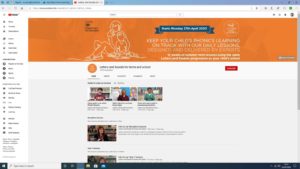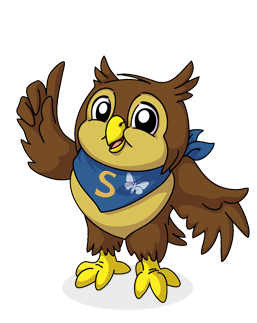Phonics
As explained in the email sent on Friday 24th, please follow the link below to the ‘Letters and sounds’ you tube channel ready to watch the live session. The Reception session starts at 10am, and the Year 1 sessions starts at 10.30am.
If you are able to take part in both that is great as the reception session will be recapping sounds that your child has already learnt which is always good for extra practise.
This is new to me today as well – I would recommend getting your child’s phonics pack out that was sent home as they are likely to need the mini whiteboard and pen. After today’s session I will be able to give you some more infromation ready for the rest of the week.
Hopefully these will be a success and provide your children with another way to access some phonics whilst at home. As discussed in the email, let me know you thoughts and how the sessions have gone.
https://www.youtube.com/channel/UCP_FbjYUP_UtldV2K_-niWw/
The page looks like this…

English – Sidney Spider
This week we are continuing with our story Sidney Spider. Last week you made some amazing story maps – keep these to hand as you will need them again this week!
Follow the same structure that we have been using all of last week…
Start off retelling the story – with actions if you have some. You will probably notice this week that your child is becoming much more familiar and confident with the story!
Next go to page 8 – Quiz time! As an extra challenge, once they have completed the quiz challenge have a go at writing some of your own questions. You might need to work together on these, remember we are using a different type of punctuation. We need to remember to use a question mark! You might want to use our ‘question words’ to help start you off….. Who What Where Why When
Maths No Problem- Chapter 13 Division
This week we are back looking at our Maths No Problem books, please find Chapter 13 – Division. Starting on page 49. This links in with the activities from White Rose Maths last week – hopefully these lessons will consolidate those skill.
In Focus – To begin this lesson, use 8 real objects from your home (e.g. cans of soup, counters, flowers, books). Tell them a number story about needing to place 2 of each object into separate boxes and trying to figure out how many boxes you will need. Let them discuss this and manipulate the objects to solve the problem. Repeat this using 8 different objects. Prompt you child with questions about fitting more than 2 objects into some of the boxes, is this ok? Why or why not? It is important they recognise that sharing equally is essential for example, if one box gets 2 cans, all the boxes must get 2 cans.
Lets learn – Follow the guidance in your textbook. Look at how many objects in total, and how many are then needed in each group. Focus on using the language ‘divide’ and ‘equal groups’. If you have time work through the ‘activity time’ – this is very similar to last weeks activities
Guided practice – During Guided Practice, you are grouping 18 pencils equally. Ask your child if they are able to see 6 pencils in the picture anywhere. Prompt them by saying your friend said that when she sees 6 pencils, she circles them to help her find the answer. Is this helpful? Why or why not? Let them discuss and explain their thoughts to each other. (Please do not draw in the textbook).
Only move onto the workbook if your child is confident with the concept – if not continue with the activity and guided practise. We all learn at different rates so please do not worry.
Workbook – Complete Pages 53 – 56 ‘Grouping equally’. At school the children would try to work through these questions independently with an adult to guide them through what the question is asking for, reading when needed and modelling where to write the answers. If you are able to support this at home that would be great, the aim here is for children to apply the skills they have just practised.



